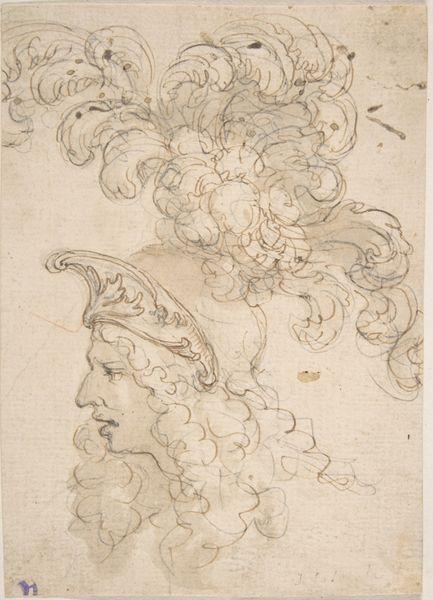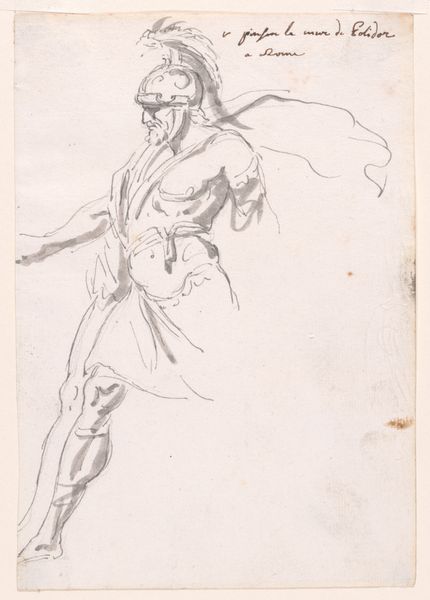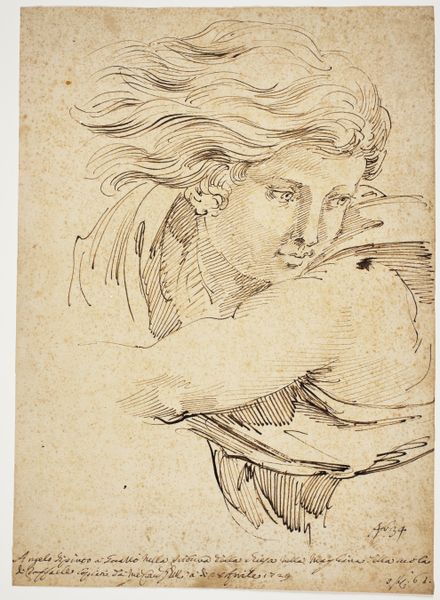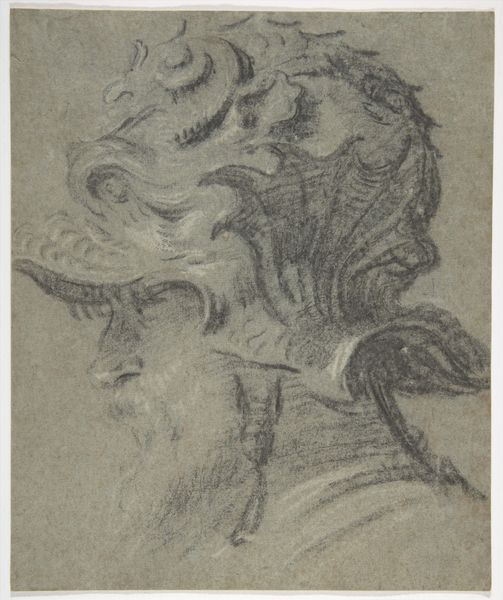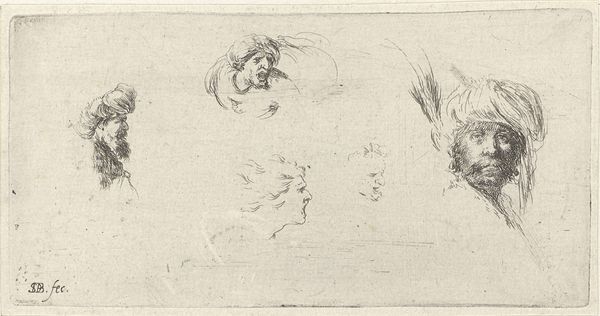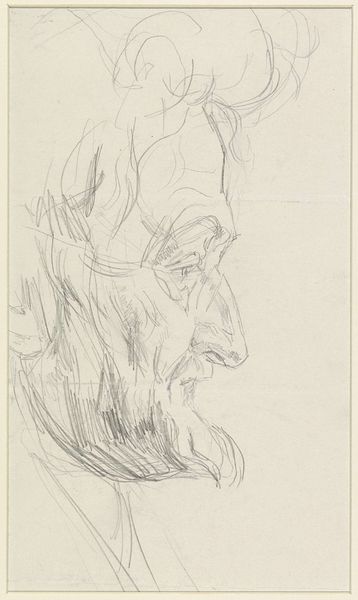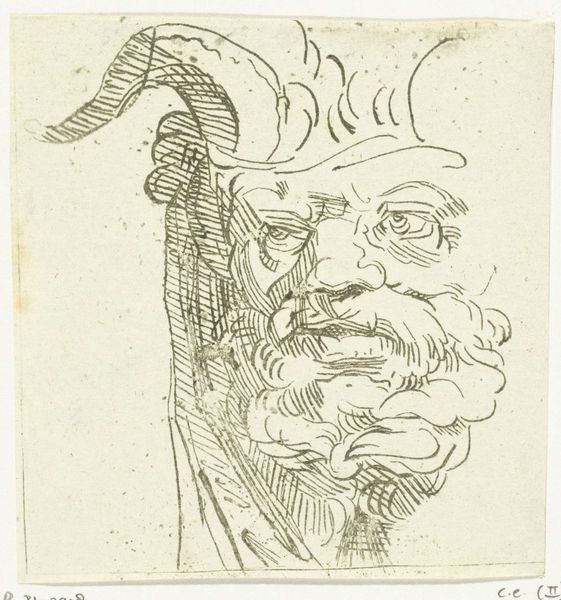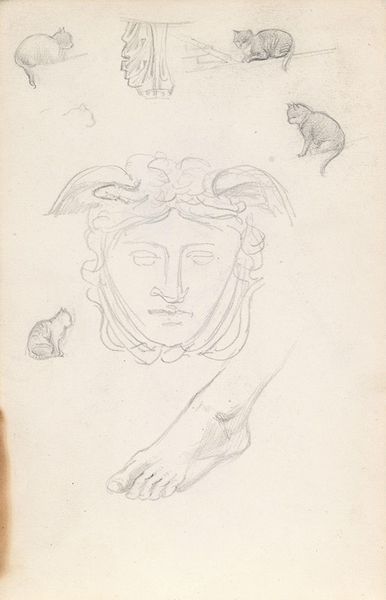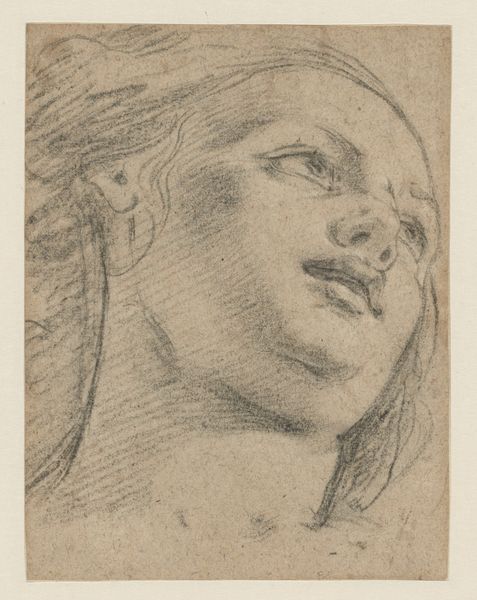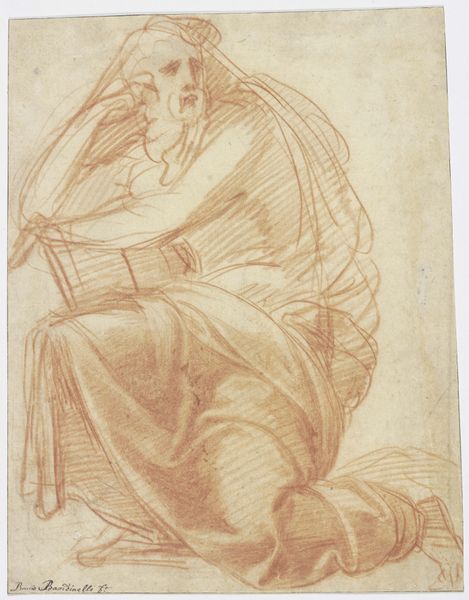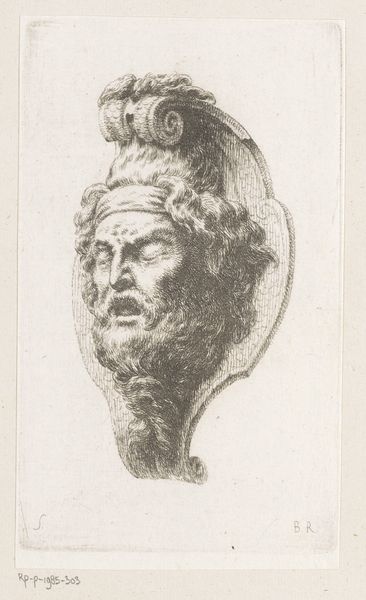
Dimensions: 69 mm (height) x 54 mm (width) (bladmaal)
Editor: This is Jens Juel's pencil drawing, "A Medusa-like Female Head in Profile to the Left," made sometime between 1743 and 1809. There's something unsettling about it; the stark lines and implied movement make the figure feel incredibly volatile. What do you make of its impact? Curator: I see a study in emotion, rendered through the lens of Romanticism. Consider the historical context: the late 18th century was a time of revolution and upheaval. This drawing, with its dynamic lines and dramatic expression, seems to tap into the anxieties of the period. It reflects a shift away from the restrained Neoclassicism towards a celebration of individual feeling and experience. Do you agree it expresses that? Editor: Absolutely. It feels like a raw, unfiltered expression of inner turmoil, but what's the significance of it being a female figure likened to Medusa? Curator: That's a fascinating question. Medusa, often depicted as a monstrous figure, was also a symbol of female rage and power. By associating the female figure with Medusa, Juel is engaging with a complex cultural mythology. The politics of imagery during this period were highly gendered. Perhaps this drawing serves as a commentary on the suppressed power and potential of women within the rigid social structures of the time. Do you think it might also challenge traditional representations of women in art? Editor: I think it does. It certainly gives me a new perspective on how art can reflect and subvert societal expectations. Curator: And hopefully, offers you an appreciation for how socio-political context shapes art.
Comments
No comments
Be the first to comment and join the conversation on the ultimate creative platform.

